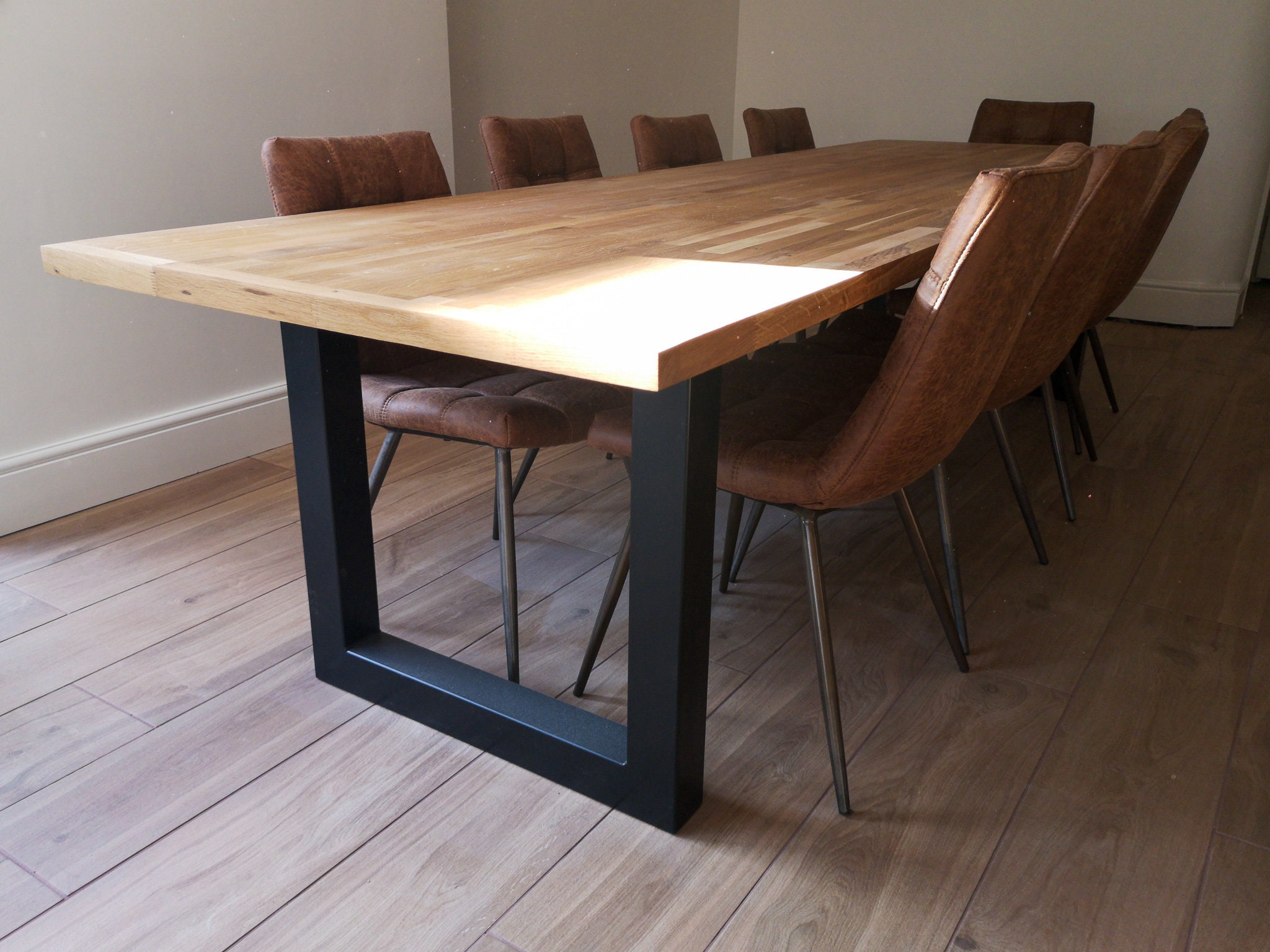Dining Room Table Legs That Incorporate Performance and Modern Design
Dining Room Table Legs That Incorporate Performance and Modern Design
Blog Article
A Detailed Check Out Eating Table Leg Styles: Discovering the Ideal Suit
Selecting the appropriate table leg style is essential for both aesthetic allure and practical functionality. Traditional 4 legs provide timeless style and security, while the pedestal base provides raised legroom and a contemporary look. For those with bigger tables, trestle legs make sure sturdy assistance, whereas barrette legs introduce a mid-century modern-day vibe with their minimal style. The x-shaped legs mix modern style with boosted stability. Each of these alternatives brings special benefits, making the option greater than just an issue of preference. Discover even more to uncover which style perfectly complements your eating area and way of living.
Traditional Four Legs
Among the different kinds of eating table leg designs, the conventional four-leg style continues to be a timeless selection for numerous families. 4 legs give well balanced support, guaranteeing the table continues to be steady and capable of birthing substantial weight (dining room table legs).
From an aesthetic perspective, the conventional four-leg style can be easily adapted to numerous interior styles. Whether crafted from timber, metal, or a combination of products, these legs can be delicately sculpted, streamlined and minimalistic, or anything in between. Their adaptability permits them to complement both rustic and contemporary settings effortlessly.
Moreover, the uncomplicated framework of the four-leg design facilitates simplicity of movement and positioning within a room. Unlike more complicated bases, this style lessens blockages, offering adequate legroom for restaurants. In recap, the typical four-leg table leg style marries enduring sophistication with useful functionality, making it an astute choice for those seeking both kind and feature in their dining furnishings.
Stand Base
Often commemorated for its elegant and space-efficient layout, the stand base is a recognized choice to the conventional four-leg configuration in table leg styles. This unique base typically includes a solitary central column sustaining the tabletop, which can differ in form, from ornately carved wood to smooth, modern metal. One of the key benefits of the stand base is its capability to take full advantage of legroom and seating flexibility. Without corner legs, restaurants are paid for greater liberty of motion, making it an excellent option for round and oblong tables that promote more intimate and inclusive celebrations.
Furthermore, the stand base's central assistance can handle significant weight, enabling using heavier table tops, such as marble or thick wood. This strength coupled with its aesthetic adaptability makes the stand base a prominent choice in both traditional and contemporary interior setups. It can perfectly integrate with various style themes, from timeless style to minimal modernity. In addition, the central column itself supplies a canvas for elaborate layouts and artistic expressions, adding a component of aesthetic passion underneath the table. In summary, the pedestal base combines capability with design, making it a fine-tuned and sensible option for varied eating environments.
Trestle Legs
Trestle legs give a durable and classic structure for eating tables, defined by their straight cross-bracing and durable assistance light beams. Stemming from medieval times, this style has advanced yet kept its vital framework, making it a perennial favorite in both standard and contemporary settings. The central trestle light beam, frequently supported by two or more vertical posts, uses outstanding security, enabling bigger table lengths without the requirement for added legs.
A considerable benefit of trestle leg tables is the enough legroom they provide. Unlike tables with four corner legs, the lack of obstructions at the table's sides offers basics unblocked space for chairs and restaurants, enhancing convenience and availability. This makes trestle tables optimal for accommodating larger gatherings, whether in a dining-room or a banquet hall.
From rustic farmhouse to sleek modern-day designs, trestle legs can be personalized to match specific preferences. Their long-lasting allure and practical benefits make trestle legs an engaging selection for those looking for both design and usefulness in their dining table.
Hairpin Legs

The appeal of hairpin legs depends on their simplicity and adaptability - dining room table legs. Offered in a variety of products, including steel and brass, they can be completed in countless shades to complement different interior styles. Whether matched with a rustic wooden table top or a contemporary glass surface, barrette legs effortlessly mix performance with a touch of vintage beauty
Resilience is an additional noteworthy feature of hairpin legs. Despite their delicate browse around these guys look, these legs are engineered to bear considerable weight, guaranteeing the eating table remains steady and safe and secure. Furthermore, they are fairly simple to install, making them a prominent selection for do it yourself fanatics and expert furnishings makers alike.
X-Shaped Legs

Constructed from materials such as steel, timber, or a mix of both, X-shaped legs can be customized to match numerous layout preferences. Steel legs often provide a streamlined and commercial feel, ideal for loft-style houses and modern-day dining rooms.
Furthermore, the design behind X-shaped legs makes certain also weight distribution, lessening the threat of wobbling and boosting sturdiness. This makes them specifically fit for bigger table that require added support. Essentially, X-shaped legs blend functional design with contemporary looks, making them a classic selection for diverse eating settings.
Verdict
A thorough understanding of eating table leg styles discloses the unique characteristics and benefits of each style. Trestle legs ensure robust assistance for larger tables, and hairpin legs present a mid-century modern visual.
Report this page